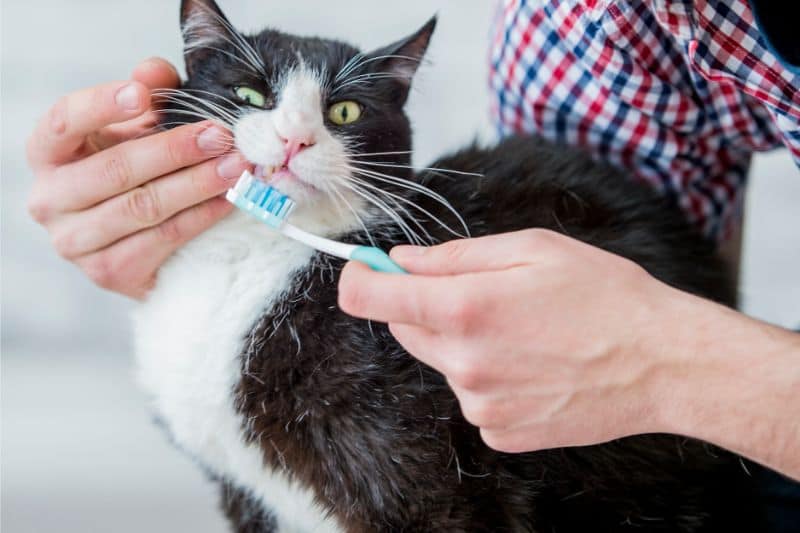Pearly Whites: How To Brush Your Pet’s Teeth

There’s plenty of pet care advice out there, but when it comes to your pet’s health and longevity, we think dental health is a top priority. That’s because it’s one of the best ways that you, as a pet owner, can give your pet a great quality of life.
By the time pets are 4 years of age, over 85% of them have some form of dental disease. And while totally preventable, dental disease in pets is also painful for them and can bring about a whole host of complications, from tooth fractures to gum disease and tooth loss.
The best plan you can make is to begin a daily regimen of brushing your pet’s teeth. You heard us right. Learning how to brush your pet’s teeth, and doing it on a regular basis, is one of the best ways to prevent tartar and plaque buildup on their teeth and stop gum disease in its tracks.
Are you rolling your eyes or giggling a bit? Read on to learn how easy it is to brush your pet’s teeth, from Rocklin Ranch Veterinary Hospital.
The Grim Reality of Pet Dental Disease
Dental disease is the most common health condition affecting pets today. Aside from causing bad breath and a painful mouth, dental disease can cause bacterial infection, bleeding, inflamed gums, and tooth fracture and loss.
But the problems don’t just stay in your pet’s mouth. Over time, the bacteria that causes dental disease enters your pet’s blood stream and can cause heart, liver, and kidney disease.
How To Brush Your Pet’s Teeth
Just as in people, pets need regular teeth cleanings in our office. But, in between professional dental cleanings, brushing your pet’s teeth can keep periodontal diseases at bay.
Ideally, begin to brush your pet’s teeth when they are young. Habits are more easily formed with young pets, but even adult dogs and cats can learn to tolerate and even enjoy this daily attention. Keep it positive and rewards based, and you’ll see how easy it can be to brush your pet’s teeth every day.
Here are some tips to get you started.
- Purchase a pet toothbrush that’s the right size for your pet’s mouth. A finger brush works well for cats and small dogs. You’ll also need pet-specific toothpaste. Never use human toothpaste on pets!
- Gently pet and touch your pet’s muzzle and outside of their mouth, so they get used to being touched on the mouth
- Let your pet lick the toothpaste off your finger
- Gradually slide your finger into your pet’s mouth
- Substitute the toothbrush for your finger, using the same technique
- Hold the toothbrush at a 45 degree angle to the gums, bristles pointing toward the gums
- Work the toothbrush in a circular motion, concentrating on the outside surfaces of the teeth
- Gradually work up to brushing for 30 seconds on each side of the mouth
This process may take time and patience, but the reward will be great – a healthier mouth for your pet and a longer life for your best friend. End each tooth brushing session on a positive note, and remember that consistency is more important than perfection.
If you need help learning how to brush your pet’s teeth, or have questions, please give us a call.

